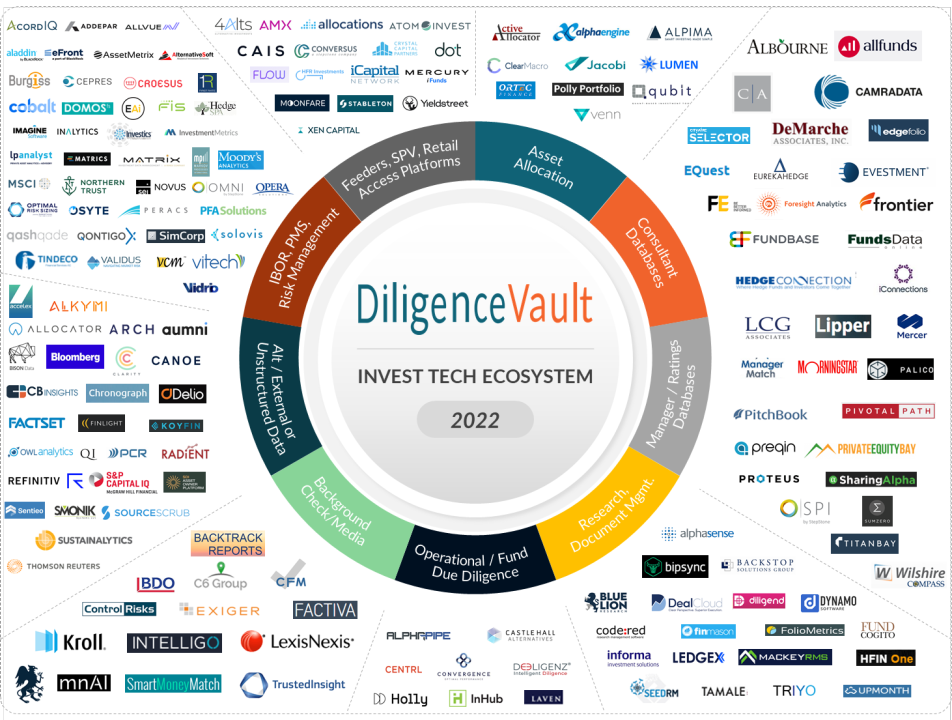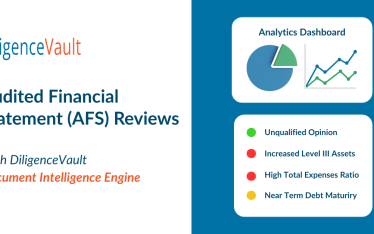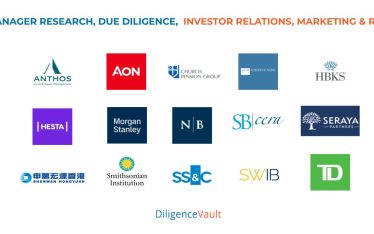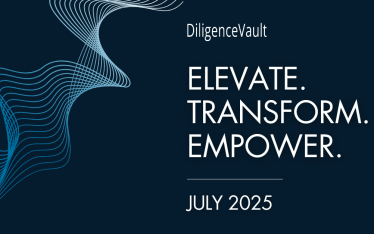The InvestTech moment is here. Technology is reshaping every aspect of the investment lifecycle – asset allocation, sourcing new investments, conducting due diligence, and portfolio and risk management. Historically technology in this segment has been subscale, but there are significant tailwinds that have led to better opportunities and increased margins.
Asset owners and allocators looking to participate in this InvestTech moment have three opportunities:
- Modernize existing investment infrastructure that is largely fragmented, analog, and manual. Investors are increasingly becoming aware of data integrity risk, multiple systems with no clear integration points, or worse – adopting a technology that can do all things, albeit sub optimally, resulting in obsolescence
- Take advantage of technology premium via direct investment opportunities that have been created in the InvestTech ecosystem as firms relentlessly focus on vertical and products specialization to empower true scale
- Take advantage of technology premium by investing in VCs backing secular tech trends – cloud hosting, cloud infrastructure, market infrastructure, digital exchanges, and more being deployed by industry tech providers
This year, we discuss eight trends that are shaping how asset owners and allocators are participating in the InvestTech scale transformation.
Data Intelligence – From Gut Instincts to Evidence-based Decision Making
There are four elements integral to realizing data intelligence for asset owners and allocators, which ultimately leads to better investment decision:
- Centralize basic information (whether structured or unstructured) to arrive at a primary source of truth, ensuring information can be quickly discovered.
- Should 80% of information be trapped in PDFs and files in general? The universe of unstructured data that the users deal with is so broad, and a successful data strategy requires firms to focus on digitization at source, and digitization at destination. The former results in a fundamental change in how data is exchanged. The latter needs deployment of advanced text extraction capabilities.
- As much as digitizing new information can become a real intelligence differentiator, domain expertise from individuals closest to the problem is an absolute necessity in harnessing the real power of data.
- As the data strategy becomes mainstream, it’s critical to establish an ethical data culture, build data ownership, and install privacy safeguards from the very beginning.
The Private Markets Phenomenon
Total AUM across private markets continued its march upward and grew 5.1% to another all-time high of $7.4 trillion as of 1H20. Product proliferation has increased, the number of firms has increased, traditional asset managers are acquiring specialist private markets firms while leveraging their distribution reach, and fund sizes have increased, all resulting in increased velocity of information flow. These factors increase focus on the need for technology across the investment lifecycle to source, conduct diligence on, and execute and monitor investments in private markets.
Another key trend in the industry is retailization of private markets – a segment attracting interest with collective AUM managed by alternative access platforms exceeding $70bn in 2021.
ESG & DEI – An Opportunity to Influence, Invest, and Integrate
Asset owners have a unique mandate around the security, welfare, and wellness of their stakeholders; their investment mandates are driven by a sense of purpose. An investor’s voice in catalyzing diversity, equity, and inclusion in the workplace, commitment to climate action and sustainable investing, is having a meaningful influence on how the asset management industry responds to ESG and sustainable investing opportunities. Further, regulatory developments in certain jurisdictions to manage the risks of greenwashing and consistency in reporting adds to the need for information and a proper reporting infrastructure, as information changes hands from issuers and portfolio companies to asset managers to end investors, as well as independent ratings and alt data providers. Many standards are emerging which bodes well for the industry as a whole, however the industry needs to rally around these to get to a meaningful reporting outcome and minimize friction.
Build Resilience around Data Regulations and Cyber Risk
Cyber risk is growing due to the proliferation of InvestTech and digital technologies and the decentralization of subcontractors with InvestTech service providers. As a technology platform that is seeing significant adoption in the industry, we have seen firsthand the fundamental tension arising between the asset owners and allocators’ need to digitize and their cyber risk team’s responsibility to protect their data and firms’ reputation.
In the last twelve months, at DiligenceVault, we have witnessed client’s cyber risks teams becoming more agile as they build resilience leading to increased depth of their assessments while incorporating flexibility in their cyber operating models to rightsize the risk factors, and rapidly assess risk exposures. As an example, DiligenceVault was leveraged for Solarwinds and Log4j breach surveys, as well as a pandemic, work from home, and return to office cyber readiness assessments. The platform provided critical information about investments in a timely fashion for robust cyber risk monitoring frameworks.
Take Note of the Industry Consolidations
In 2022, the continued industry consolidation had secular themes: large administrators and custodian firms augmenting their technology capabilities from a portfolio management and asset allocation perspective, as well as mergers and acquisitions in the private markets technology space including:
- BNY Mellon acquired Milestone
- Burgiss acquired Caissa
- Carne acquires AMX from WTW
- MackeyRMS merged with InsiderScore
- Northern Trust acquired Essentia Analytics
- Preqin acquired Colmore
- RIMES to acquire Matrix IDM
- SEI acquired Novus
Note: For firms that have multiple offerings, we have tried our best to put them in the category where they are best known. While DiligenceVault solves data, automation, and access challenges of data collection and due diligence, we are at the center of the universe here simply as authors of the industry map!😊
Empower InvestTech Firms to Tackle Big Ideas at Scale
There’s the real world, and there’s the InvestTech world. The biggest challenge for scaling in the InvestTech segment is its extremely high CAC (Client Acquisition Cost). The technology buyers are fragmented, with technology preferences amongst them being heterogeneous, budgets are often constrained, and technology is rarely in the top 3 priorities. These dynamics lead to three paths to scale for InvestTech firms: (a) create network effects, (b) focus on product-led growth, and (c) implement a partnership strategy. A recent article by the Andreessen Horowitz FinTech team articulates the need for partnerships for delivering sustainable scale. Here are three notable examples showcasing increasing collaboration in the industry:
- Cambridge Associates and IHS Markit collaborating on creating private markets benchmarks
- Mercer and eVestment formed an alliance to centralize their database and distribute research. This has created much goodwill with asset managers who now can cut down on one more database to input their information
- Factset and DiligenceVault combine a research management system with a digital diligence platform to centralize internal and external research
Take Advantage of The Technology Premium
Capital is flowing in InvestTech. The majority of which is contributed by strategic industry investors, as they have a clear advantage in intimately understanding the industry’s need for technology, CAC distributions, significant market size, and hyper-scale potential over traditional PE/VC investors.

The Need for InvestTech Implementation Partners
Oftentimes the decision to write a check of $25mm is made much faster than buying a technology costing less than $100k / year. Ever wonder why? When investing, asset allocation is key in choosing the right asset class with the right skills for the right risk and return profile. However, when buying technology, industry buyers often gravitate towards a unicorn all-in-one solution. Amidst these dynamics, for asset owners and allocators to advance on their InvestTech strategy, they must create a framework to minimize failure, including agreed-upon success KPIs, a commitment of internal resources to ensure successful adoption, and potential engagement with expert implementation partners to avoid common pitfalls.
The Road Ahead – How All Stakeholders Must Adapt
New technologies, disruptive industry trends, and demographic shifts require a rethinking of the technology adoption curve. The cost of waiting to deploy technology is expected to be much higher than the cost of technology. At the same time, being agile in keeping up with the rapid pace of innovation is critical for all stakeholders.
Are you ready to create your own InvestTech moment in 2022? If yes, DiligenceVault is introducing FinTech Breakfast with Ernst & Young in March 2022 to discuss innovation impacting the asset allocator segment with partners firms in our InvestTech map. Connect with us to secure a front-row seat :).
Check out prior maps:
2021: The Age of InvestTech
2020: Top 10 Creators of InvestTech Unicorn
2019: And The Next InvestTech Unicorn Is…
2018: The Rise of Integrated InvestTech
2017: Who Defines the Future of InvestTech
Thank you Team DiligenceVault, our clients, industry influencers, and friends for your review in refreshing the 2022 InvestTech map.





